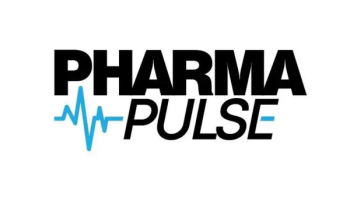
Practical Sustainability Metrics for Pharma
In the second part of his video interview with Pharma Commerce Editor Nicholas Saraceno, Nate Chenenko, principal with Ducker Carlisle, dives into the metrics pharma companies can track today in order to measure distribution-related sustainability performance.
In a video interview with Pharma Commerce, Nate Chenenko, principal with Ducker Carlisle, sheds light on the critical issue of Scope 3 emissions and their growing relevance in the pharmaceutical industry, particularly across warehousing, packaging, and outbound transportation.
Chenenko defines Scope 3 emissions as all indirect emissions that occur after a pharmaceutical product is manufactured. While many companies focus on the sustainability of raw material sourcing and production (classified as Scope 1 and 2), Scope 3 encompasses everything that follows: storing products in warehouses, packaging them, transporting them to market, and ultimately, their end-of-life disposal. Although these post-manufacturing steps may not seem like the largest contributors to a company’s carbon footprint, they are significant, and frequently overlooked.
What makes Scope 3 emissions particularly challenging for pharma manufacturers is their indirect nature and the reliance on external logistics and supply chain partners. However, Chenenko emphasizes that these areas closely align with the day-to-day operations of supply chain teams, making Scope 3 an accessible and actionable area for emissions reduction. For instance, optimizing packaging materials, choosing greener transportation methods, and reducing energy consumption in warehouses are all tangible ways companies can drive impact.
Importantly, ignoring Scope 3 emissions not only undermines comprehensive sustainability efforts but also excludes a large portion of stakeholders responsible for distribution and logistics. Chenenko argues that targeting Scope 3 emissions allows for faster, more practical sustainability gains than commonly assumed, and presents a strategic opportunity for pharma companies to align environmental goals with operational priorities.
In conclusion, Chenenko advocates for a more holistic sustainability strategy that fully integrates Scope 3 emissions. By engaging supply chain stakeholders and taking action across the post-manufacturing lifecycle, pharmaceutical companies can make meaningful progress toward their environmental goals while enhancing overall supply chain efficiency.
He also comments on the specific metrics can pharma companies realistically track today to measure distribution-related sustainability performance; how manufacturers can overcome the data gaps from suppliers and third parties when aiming for sustainability certifications or ESG reporting compliance; best practices for reducing greenhouse gas emissions across distribution channels without disrupting supply chain efficiency;how regulatory expectations and customer pressure will shape sustainability efforts in pharma logistics in the future; and much more.
A transcript of his conversation with PC can be found below.
PC: What specific metrics can pharma companies realistically track today to measure distribution-related sustainability performance?
Chenenko: Let's cover a few things simply, and then I'll give you a few more complex topics as well. On the simple side, in warehousing, pretty much everybody can track how much energy their warehouse uses, whether it's electricity, natural gas—you could have some solar generation. You could track by looking at your utility bill, just like you would in your home, how many kilowatt hours of electricity you track. As this gets a little bit more complex, you can work with a utility provider to figure out what's the source of the electricity; if it's coming from a coal plant, can we get it from a different source? Can we change over and pay?
Maybe we need to pay a little bit more, maybe we need to put our own rooftop solar panel in, or pay like a wind share or solar share to convert a little bit. That’s maybe complexity level B. Complexity level C is looking at waste streams out of the warehouse. Products come in, they are often returnable containers, but you get a lot of cardboard, a lot of single-use plastic, and a lot of pallets. Where does it go? It's relatively easy to track how much you dispose of. It's relatively hard to know where it goes.Similarly, on the packaging side, many companies know the breakdown of recycled versus non-recycled packaging. It is a little less common and even more beneficial to know by material type. We've got a certain amount of plastic that we use, some of that is recycled. Some of that is new. We've gotten a certain amount of cardboard that we use. Some is recycled, some is new, but it breaks down even further into whether it's recycled from reclaimed sources, whether it's recyclable material. You might be using recycled material, but it's not recyclable. There’s a lot of different ways to look at packaging.
One of the most impactful things on the packaging front is using returnable containers, which can often result in pretty immediate expenditure. You have to buy the containers and develop the supply chain. Developing those business cases can be a little tricky, and we can touch on that later. Then on the transportation side, this one's probably the trickiest, because many companies know how many shipments they send out the door. A smaller percentage of those companies know how many trailers they send out the door, and an even smaller percentage know how full those trailers are. Very few companies know what's powering those trailers.
Let’s just take trucking as the single example here. They're almost all diesel trucks, but depending on the age that they were manufactured, the manufacturer, the engine type, the emission standards that were in place at that time, how far they travel, how much weight is on there, and even the terrain that they go over—this all impacts. monitoring emissions.
The overarching best practice here is to not let perfect be the enemy of good. If you only know your trailer count, try to get miles. Don't worry about getting fuel. Don't worry about getting terrain. Just make one step towards gathering a little bit more information and being able to more accurately manage. That's always our recommendation—no matter what the industry is—and that will get you a little closer to having a good measurement and being able to properly incentivize.
Newsletter
Stay ahead in the life sciences industry with Pharmaceutical Commerce, the latest news, trends, and strategies in drug distribution, commercialization, and market access.





